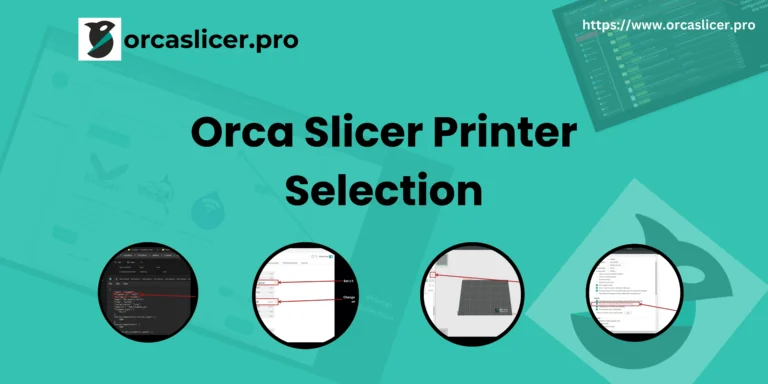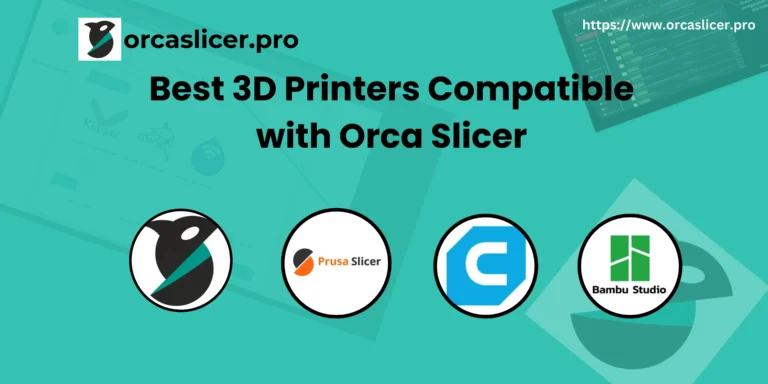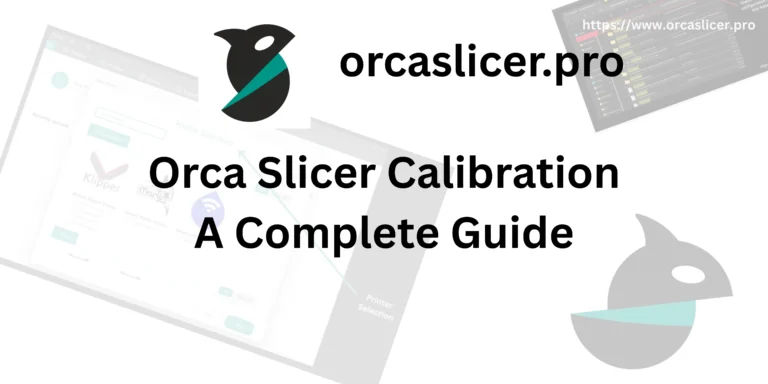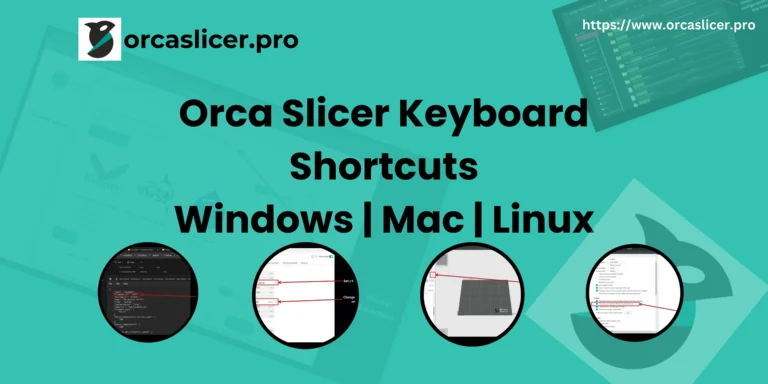Orca Slicer vs Qidi Slicer : Best 3D Printing Workflow
When choosing the best slicer software for your 3D printer, especially for QidiTech machines, two options often come up: Orca Slicer and Qidi Slicer. Each has its own strengths, features, and ideal use cases. In this comparison guide, we’ll break down both slicers across critical factors such as performance, compatibility, UI/UX, features, speed, and print quality to help you decide which is best suited for your workflow in 2025.
Orca Slicer vs Qidi Slicer
What Is Orca Slicer?
Orca Slicer is a community-driven, open-source slicer based on Bambu Studio, designed for high performance, modularity, and extended compatibility. It’s optimized for power users and advanced workflows, offering granular control over slicing profiles, filament settings, and printer configurations.
Key Features:
- Multi-material and multi-extruder support
- Variable layer height and tree support
- Auto-calibration & Arachne-style perimeter generation
- Enhanced support interface editing
- Compatible with Bambu, Creality, Prusa, and now Qidi printers
- Powerful scripting and G-code customization
✅ What Is Qidi Slicer?
Qidi Slicer is a customized version of Cura, developed by QidiTech to match its proprietary hardware. It’s tailored for plug-and-play functionality with minimal user input, especially suited for beginners and hobbyists who prefer simplicity.
Key Features:
- Preconfigured print profiles for all Qidi printers
- Minimal calibration needed
- User-friendly interface
- Direct support for Wi-Fi printing on Qidi devices
- Limited compatibility with non-Qidi printers
Feature Comparison Table
| Feature | Orca Slicer | Qidi Slicer |
|---|---|---|
| Base Engine | Forked from Bambu Studio | Based on Ultimaker Cura |
| UI/UX Design | Advanced, modular interface | Beginner-friendly, simplified |
| Support for Other Printers | High (Bambu, Prusa, Creality, etc.) | Low (mostly Qidi only) |
| Tree Supports | ✅ Yes | ❌ No |
| Adaptive Layer Height | ✅ Yes | ❌ No |
| Speed of Slicing | Fast with GPU acceleration | Moderate |
| Filament Tuning | Extensive | Basic |
| Firmware Compatibility | Manual & Custom Profiles | Optimized for Qidi firmware |
| Community Support | Large, active community | Limited to Qidi forums |
🖨️ Printer Compatibility
- Qidi Slicer works seamlessly with Qidi printers like the Qidi X-Plus 3, X-Max 3, and i-Fast.
- Orca Slicer, although not officially developed for Qidi, supports G-code profiles for QidiTech devices with minor adjustments, making it a strong Qidi Slicer alternative for users wanting more control.
🎯 Use Cases
🟢 Use Orca Slicer if:
- You want precision control over every aspect of your print
- You’re working with multiple printer brands
- You need advanced support structures and high-speed slicing
- You’re running a print farm or batch jobs
- You care about efficient filament use and high-quality overhangs
🟢 Use Qidi Slicer if:
- You’re a beginner or casual user with a Qidi printer
- You want pre-tuned settings and easy setup
- You rarely modify slicing parameters
- You prioritize simplicity over flexibility
🔄 Performance and Print Quality
In benchmark tests, Orca Slicer consistently delivers smoother surfaces, better overhang control, and reduced print times when finely tuned. Qidi Slicer, while user-friendly, lacks advanced options like linear advance, input shaping, and Arachne perimeter generation found in Orca Slicer.
🛠️ Customization and Tuning
Orca Slicer allows:
- Import/export of custom G-code macros
- Use of community-made profiles
- Access to advanced modifiers and mesh-based tuning
- Per-object settings
Qidi Slicer, in contrast:
- Offers fixed settings with fewer tweakable parameters
- Lacks scripting or modifier meshes
- Doesn’t support external profiles or non-Qidi firmware
🔁 Community and Updates
- Orca Slicer has an active GitHub repo, regular beta releases, and support from the maker community, including users on Reddit and Discord.
- Qidi Slicer updates are less frequent and primarily released via QidiTech’s website or bundled with firmware updates.
📝 Final Verdict
| Category | Winner |
|---|---|
| Beginner-Friendliness | Qidi Slicer |
| Feature-Rich Slicing | Orca Slicer |
| Cross-Printer Support | Orca Slicer |
| Customization | Orca Slicer |
| Plug & Play Simplicity | Qidi Slicer |
| Print Quality Control | Orca Slicer |
Qidi Slicer vs Orca Slicer: Which is the best?
If you’re a beginner who owns a Qidi printer and just wants to print without diving into settings, Qidi Slicer is the safer bet. But if you want full slicing power, advanced controls, and future-ready performance, Orca Slicer is the superior choice—even for Qidi printers with a little tweaking.
Frequently Asked Questions
What is the best slicer for Qidi X-Plus 3?
While QIDI Studio is the default slicer, many users prefer Orca Slicer for its advanced controls, Bambu Studio compatibility, and better print optimization. It’s especially effective for high-speed prints on the Qidi X-Plus 3.
What are the best Qidi slicer alternatives in 2025?
Top Qidi slicer alternatives include Orca Slicer, Cura, PrusaSlicer, and SuperSlicer. Each offers unique profiles, customizable settings, and improved UI/UX compared to stock QIDI Studio.
Does Orca Slicer work with Qidi printers?
Yes, Orca Slicer is compatible with several Qidi printers, including the X-Plus 3, I-Fast, and Q1 Pro. You may need to import a compatible printer profile or modify the machine settings manually.
Is Orca Slicer better than Cura?
For many advanced users, Orca Slicer provides more refined control over input shaping, pressure advance, and machine tuning. However, Cura is still more beginner-friendly and supports a wide range of plugins.
Is Orca Slicer better than PrusaSlicer?
Orca Slicer offers a cleaner UI, real-time preview, and is better optimized for high-speed CoreXY printers. PrusaSlicer, however, excels in support generation and detailed filament settings, making it better for complex prints.
Is Qidi reliable as a 3D printer brand?
Yes, Qidi Tech is well-regarded for producing high-quality enclosed printers with dual extrusion and excellent customer service. Their machines are beginner-friendly yet capable for prosumers.
What is the difference between QIDI Studio and Qidi Slicer?
QIDI Studio is the updated slicing software developed by Qidi, while Qidi Slicer is often the older or bundled version. Studio generally includes better UI, newer slicing engines, and updated firmware integration.
What’s the difference between Qidi Slicer vs Orca Slicer (Reddit opinion)?
According to Reddit users, Orca Slicer provides cleaner print paths, better tuning options, and more frequent updates. Qidi Slicer, while simple, lacks advanced features and customizability.
How to use Orca Slicer with Qidi printers?
Download Orca Slicer, then manually add your Qidi printer or import a profile from the community. Adjust start and end G-code, set machine dimensions, and enable pressure advance if supported.
What slicer does the Qidi Q1 Pro use?
The Qidi Q1 Pro uses QIDI Studio by default, but it can also be configured with Orca Slicer or Cura using custom printer profiles.
Can I use Cura with a Qidi printer?
Yes, Cura can be used with Qidi printers, though manual configuration is required. You’ll need to enter build volume, nozzle size, and G-code snippets specific to Qidi’s firmware.
What are the requirements for Qidi Slicer?
Qidi Slicer works on Windows and macOS. It requires minimal system specs—at least 4GB RAM and an i5 processor or equivalent—for smooth slicing and previewing.
Is Orca Slicer compatible with Qidi I-Fast?
Yes, Orca Slicer can be configured to work with the Qidi I-Fast by customizing the build plate size, dual extruder settings, and G-code scripts.
Is Orca Slicer available for download?
Absolutely! You can download Orca Slicer from GitHub or the official website. Make sure to choose the latest stable release for best compatibility.
How does Orca Slicer compare to Bambu Studio?
Orca Slicer is a fork of Bambu Studio, optimized for open-source printers. While both are visually similar, Orca supports more non-Bambu machines and community plugins.






